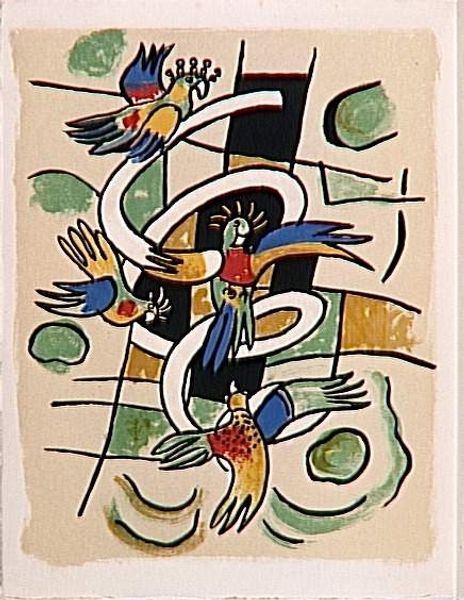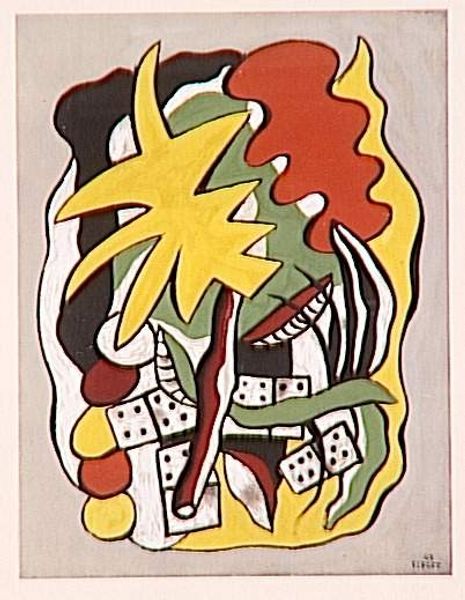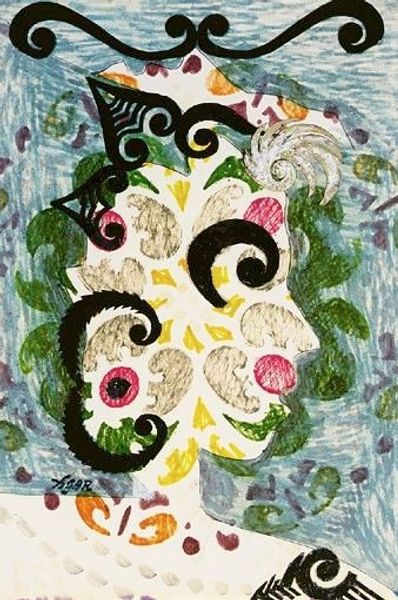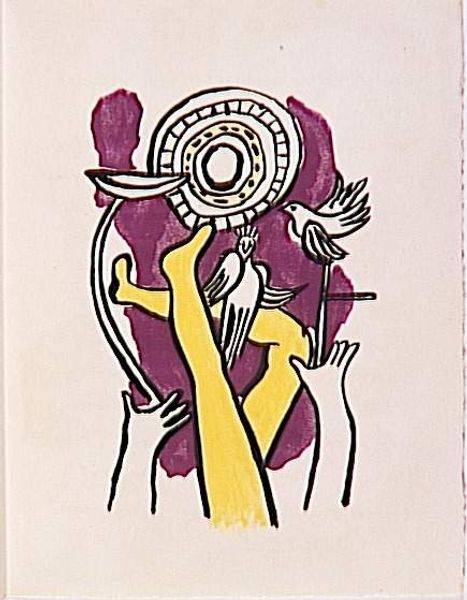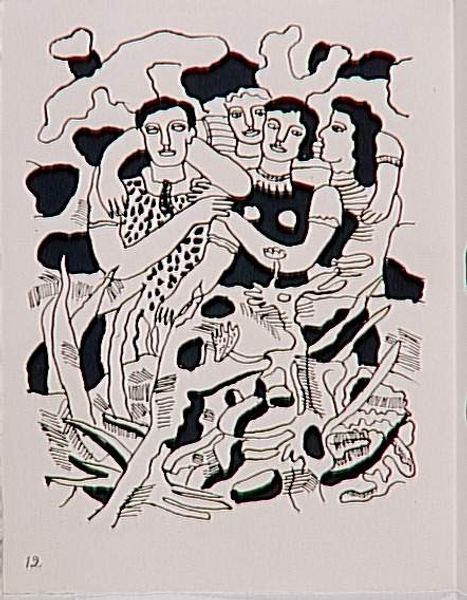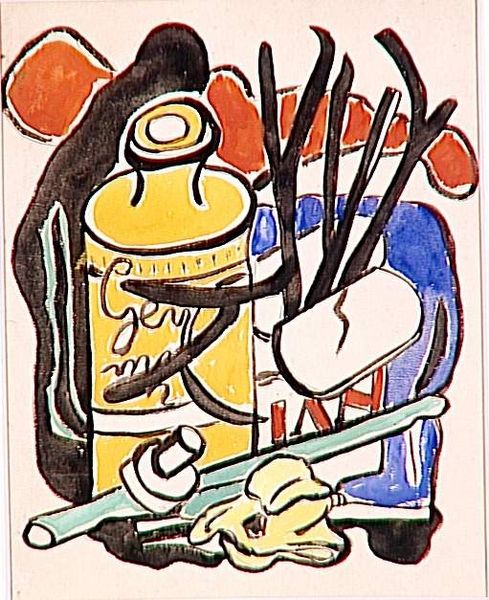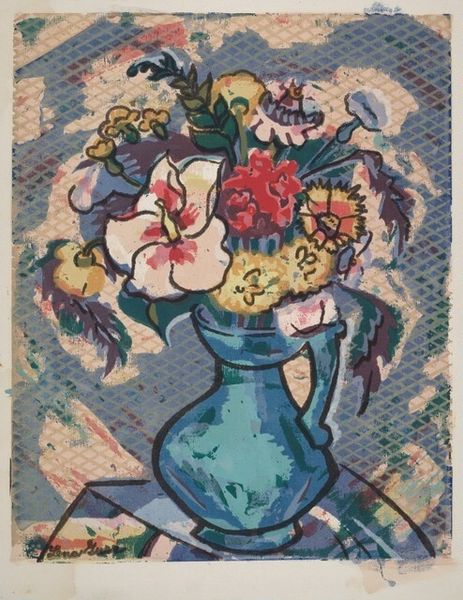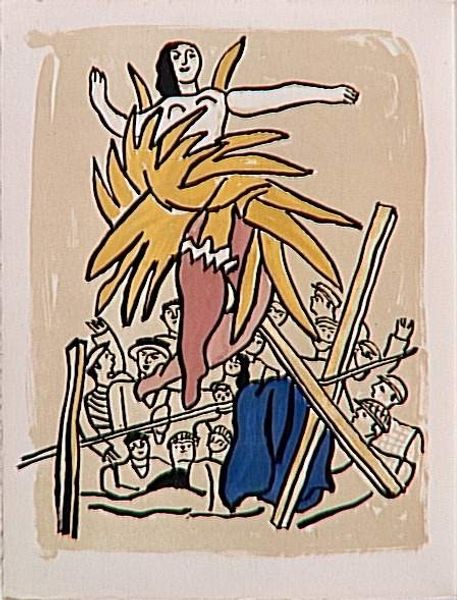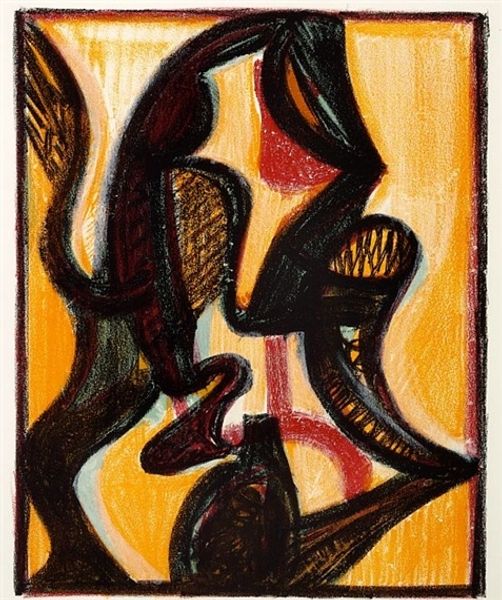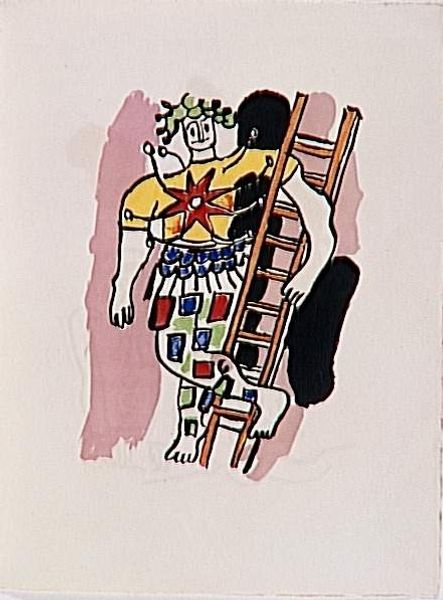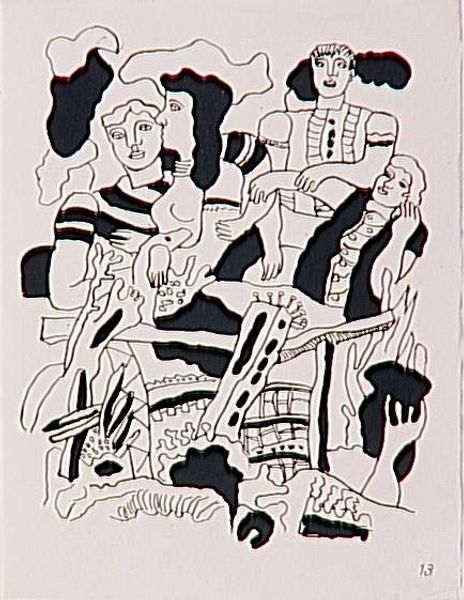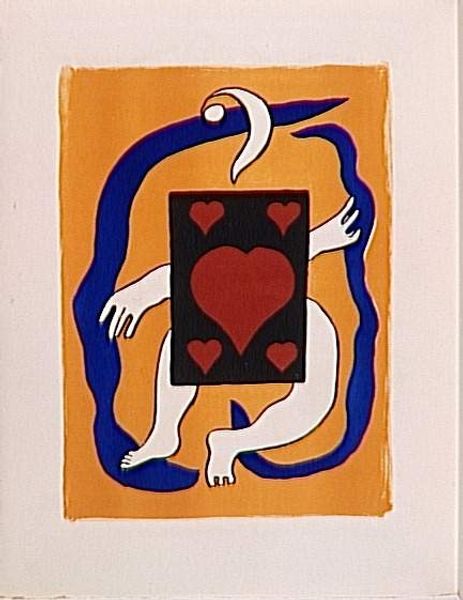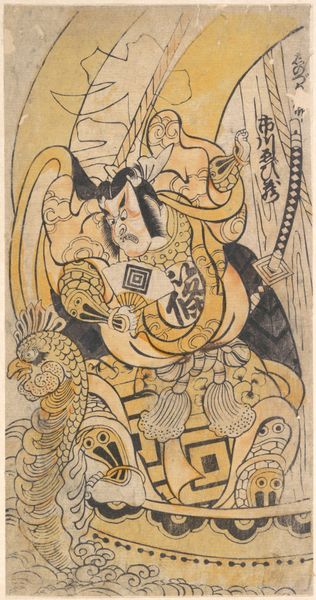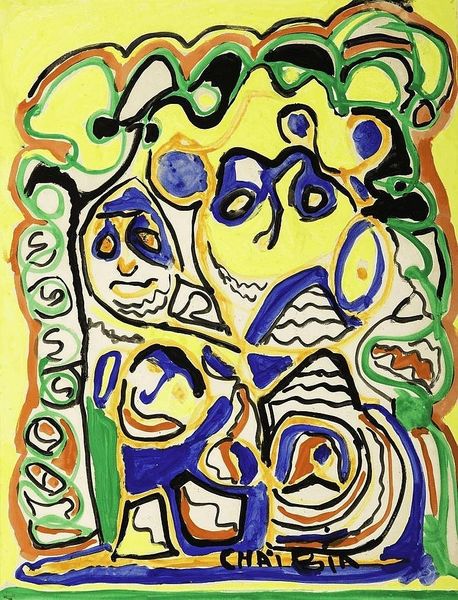
lithograph, print
#
cubism
#
lithograph
# print
#
landscape
#
figuration
#
abstraction
#
modernism
Dimensions: 42.5 x 32.8 cm
Copyright: Fernand Leger,Fair Use
Curator: Ah, "The album \"Circus\"", a lithograph by Fernand Léger from 1950. Currently held at the Musée National Fernand Léger in France. Editor: It's visually startling. The bold black outlines immediately grab you, like a vibrant, slightly chaotic dreamscape. Curator: Léger’s work reflects his deep engagement with post-war reconstruction and the role of art in everyday life. Here, in this album cover, the circus acts as a symbol of popular entertainment accessible to all. Editor: Notice the use of color blocking and the flattening of space? There's a very conscious rejection of traditional perspective. And look at the abstracted forms; figures and flora blend into a joyous swirl. It's deceptively simple but structurally complex. Curator: Precisely. Léger championed an art accessible to the working classes. The circus motif allowed him to explore themes of labour, leisure and community through dynamic figuration and abstraction. Editor: The figures themselves, fragmented and simplified, have this incredible weightlessness about them. There's an ethereal feeling in the composition and the lithographic print provides its own specific textures. How the solid black is set beside more porous hues—lovely contrast! Curator: Consider the historical moment; after years of conflict, the desire to rebuild society included accessible culture. Prints, and specifically lithographs such as this piece, allowed artwork to be reproduced efficiently for wider circulation. Editor: True. It served a purpose within society, but also the bold, bright forms transcend any direct socio-political reading. I'm struck by its playful modern aesthetic and compositional rhythm. It is optimistic but also intriguing and somewhat bewildering. Curator: A fantastic example of how modern art can simultaneously reflect its time while pursuing a universal appeal. Léger's work represents a belief in art’s power to bring pleasure and contribute positively to collective experience, particularly through figuration after near total abstraction dominated avant garde sensibilities for nearly half a century. Editor: Absolutely. By focusing on formal elements and Léger’s distinctive aesthetic, we uncover new nuances.
Comments
No comments
Be the first to comment and join the conversation on the ultimate creative platform.
